
Hands on Review: Ss Brewtech InfuSsion Mash Tun
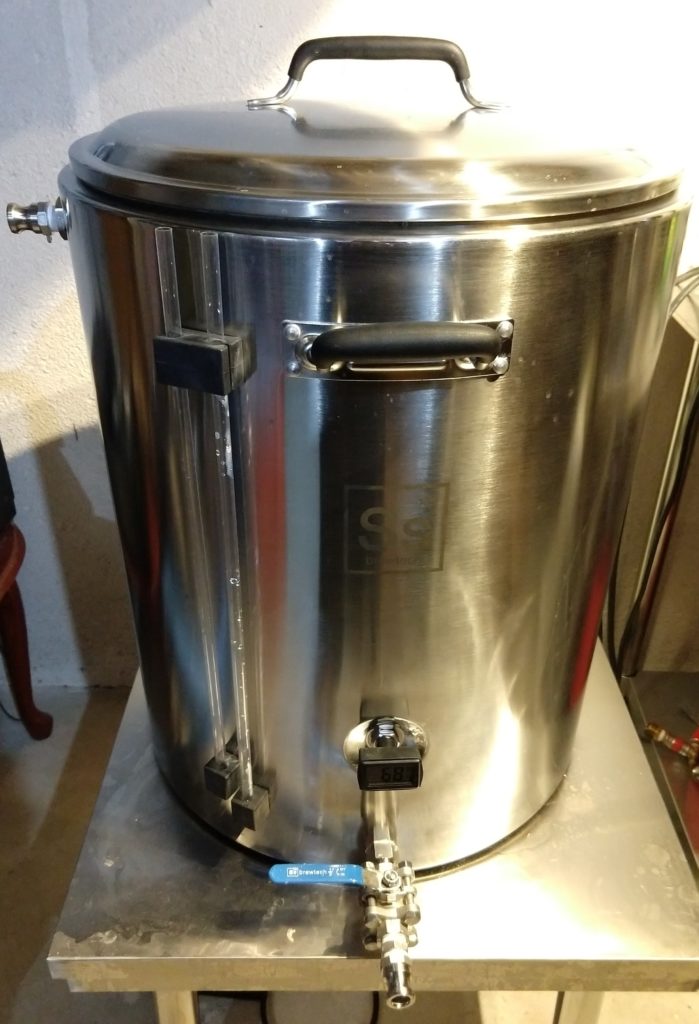 This review is by Homebrew Finds Contributor Brad Probert. Brad is an engineer, expert homebrewer and experienced reviewer. Grab a link to Brad’s website at the end of this review.
This review is by Homebrew Finds Contributor Brad Probert. Brad is an engineer, expert homebrewer and experienced reviewer. Grab a link to Brad’s website at the end of this review.
Ssbrewtech InfuSsion Mash Tun
At first glance, you might think the Brewtech InfuSsion mash tun was only created to lure those mashing in Igloo coolers into something more sophisticated. And that might be the appeal to some. For me, I was looking for a mash tun as I moved from e-BIAB to a 2-vessel electric system. I wanted a mash tun that’s only job was mashing. The InfuSsion provided that simplicity of function, while still being technologically advanced.
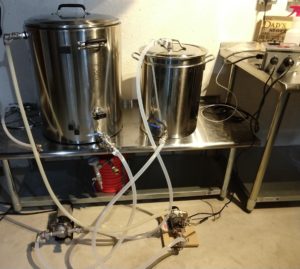 Two Vessel Setup
Two Vessel Setup
The InfuSsion mash tun is a combination stainless steel kettle and insulated cooler. The inside of the mash tun is durable stainless steel, as is the outside. In between is sandwiched high density insulating foam to make a full inch of engineered layers. With the foam inside the walls you can’t directly heat the mash tun as you’d risk melting the foam. Of course with the foam in there, it means you’re less likely to need to add heat.
Compare Prices and Selection, Review Continues Below
- Ss Brewtech InfuSsiion Mash Tuns at MoreBeer
- Ss Brewing Technologies at Great Fermentations
- Ss Brewing Technologies at Keg Outlet
- Search Amazon for “ss brewtech” – offerings vary
- Search eBay for “Ss Brewtech InfuSsion Mash Tun” – offerings vary
![]() A closeup look at the silicone lid gasket
A closeup look at the silicone lid gasket
Although the insulated walls get the most attention, the bottom of the mash tun is just as innovative. The false bottom sits on a step at the bottom of the tun, with a silicone gasket to seal to the walls and keep grain from sneaking by. Under this false bottom sits a sloped floor that directs all liquid down to a center drain. This drain has a stainless pipe that feeds to the ball valve outlet. With this sloped floor arrangement, you get 0 dead space under the false bottom and are able to scavenge every last drop of wort from your mash.
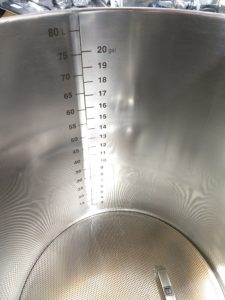 Etched Volume Markings
Etched Volume Markings
With the 2 layers of stainless steel, this makes for a 50 lb beast of a pot. The handles are fully up to the job, with heavy duty rivets through the outside layer, but leaving a smooth clean inner surface. The mash tun has volume markings etched on the inside wall in gallons and liters as low as 3 gallons, all the way up to 20. It also comes with a digital temperature sensor with LCD readout that sits in a thermowell at the 4.5 gallon level height.
Related:
The 20 gallon version has two added features that don’t show up on the 10 gallon model. First is a manometer that gives you a visual reading of the pressure/vacuum underneath the false bottom compared to the pressure above. This lets you understand the liquid level in your mash tun without opening the lid, and also provides a pre-warning of a stuck mash. The other 20-gallon feature is a recirculation port. You can screw your hose fitting of choice to the outside, and then the inside can have 1/2″ accessories threaded onto it.
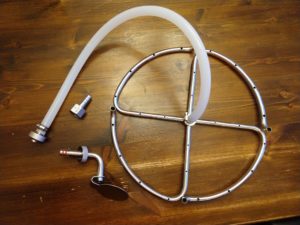 Recirculation Kit
Recirculation Kit
Brewtech sells a Recirculation Kit that comes with two accessories. One is a Vourlaf Attachment, and the other is a Recirculation Manifold. The Vourlaf Attachment is a small length of tubing that attaches to your kettle with a hand-tightened nut. This tube empties out onto a wide flat spoon-like plate so the recirculation flow hits that and waterfalls down onto your grain bed. Once you’re finished with vourlaf, hand twist open the lock nut and put in its place the Recirculation Manifold. The manifold is a sort of pinwheel arrangement with 4 spokes coming out from the center with small holes drilled in them. This rests on top of your grain bed, slowly flowing out wort during a recirculation process.
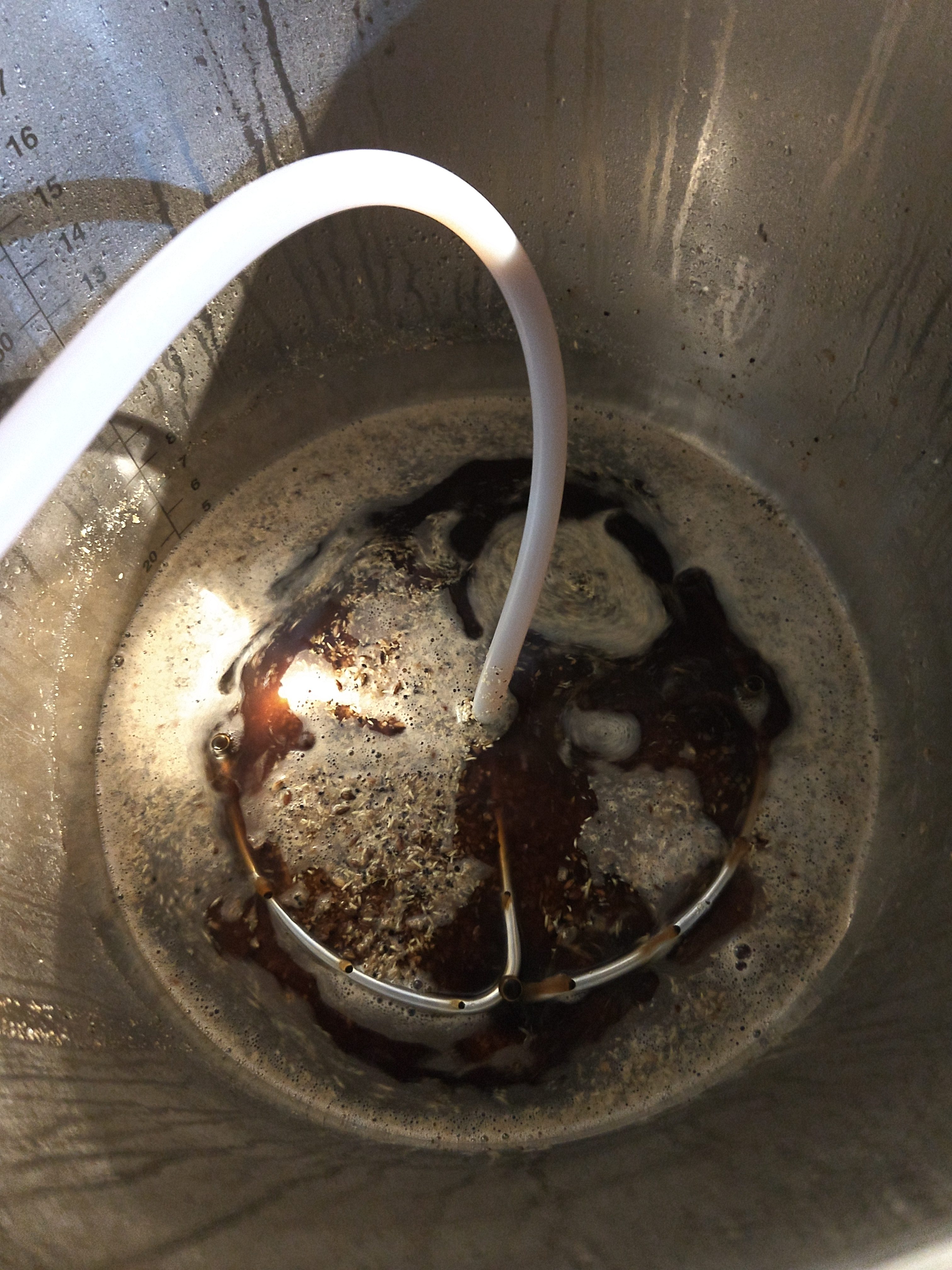 Recirculation Manifold In Use
Recirculation Manifold In Use
Compare Prices and Selection, Review Continues Below
- Ss Brewtech InfuSsiion Mash Tuns at MoreBeer
- Ss Brewing Technologies at Great Fermentations
- Ss Brewing Technologies at Keg Outlet
- Search Amazon for “ss brewtech” – offerings vary
- Search eBay for “Ss Brewtech InfuSsion Mash Tun” – offerings vary
Hands on Review
The finish quality on the stainless is amazing. It has a pearl-like finish that seems to almost glow. Not mirror-like that will have you grumbling about fingerprints, the finish makes a good working surface, but super smooth for easy cleanup. Which with its size & weight, you need something going your way for clean-up!
The lid has an insulated core and a large soft silicone gasket seal entrapped in the lid. After draining wort for a while, the mash tun was pulling a vacuum and I had to pull up with extra effort to get the lid off. That’s great for mash temp stability, since any air leaks are a path to suck out the heat.
I used both recirculation attachments at different times. With the hand-tightened locknut, it made changing these out a breeze. I was initially worried about the Recirculation Manifold’s holes being prone to collecting floating grain husks, but I didn’t experience that at all. It sat on top of the grain bed, and with so many holes, I could have a good flow rate without creating channels in the grain bed.
The sloped bottom with its drain tube worked well. With the smaller diameter of the drain tube, I had to take some care to not flow too quickly out of the mash tun. The manometer tubes on the outside were surprisingly helpful in adjusting my flow rate. If I was trying to flow out too fast, it would show up in the manometer. I’d have to throttle the output of my pump, or I’d hear it starting to “slurp” in the mash tun. The drain tube did require several good flushes of water to ensure all the grain bits came out, though at the end of brew day.
I made 3 different batches with the mash tun. My grain mill is set pretty tight with 0.030” gap. On the first two batches I didn’t do a good vourlaf before pumping out wort into my boil kettle and I got a few stray bits of crushed grain. On the third batch, I vourlafed for about 5-7 minutes and the wort was clear. I had no grain floaters at all in my boil kettle on that brew.
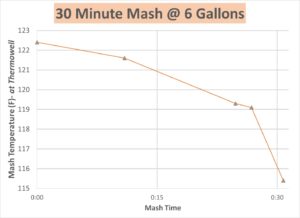 Plot of 30 minute 6 Gallon Rest
Plot of 30 minute 6 Gallon Rest
My first two batches were 5 gallons (into fermentor) batches, as I wanted to see how a “standard sized” batch would work in this giant. It was completely do-able, but the temperature holding wasn’t as good as when it was fuller. I recorded good temperature data on the second batch which had a 122F mash rest for 30 minutes. It was at about 6 gallons in the mash tun with grain + water. It held pretty well for the first 25 minutes, but then dropped off significantly.
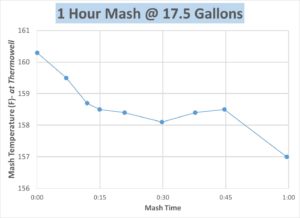 Plot of 1 hour 17.5 Gallon Rest
Plot of 1 hour 17.5 Gallon Rest
For my third test batch, I made a 10 gallon Imperial Stout with a 1.093 OG. On that one, I was sitting at about 17.5 gallons of the 20 gallon mash tun. It held temperature pretty well for the first 45 minutes, but started to drop by the time I finished up at 1 hour.
Conclusions
Overall, the build quality of the mash tun is commensurate with its price. The smooth surface inside & out is both beautiful to look at and easy to clean. The recirculation attachments are well thought-out and function well in brew day process. The insulated walls help hold temperature in during the mash, but that’s really most effective when using most of the volume inside the mash tun. To improve temperature-holding ability, Brewtech recommends pre-heating the mash tun with 10 gallons of 160F water for 15 minutes before mashing in. This will require some experimentation to determine the right strike water temperature. But the simplification of brew process of not having to do RIMS recirculation to maintain mash temp probably would make that worthwhile.
Compare Prices and Selection, Review Continues Below
- Ss Brewtech InfuSsiion Mash Tuns at MoreBeer
- Ss Brewing Technologies at Great Fermentations
- Ss Brewing Technologies at Keg Outlet
- Search Amazon for “ss brewtech” – offerings vary
- Search eBay for “Ss Brewtech InfuSsion Mash Tun” – offerings vary
Everything All Grain!
More Ss Brewing Technologies Reviews!
More Photos
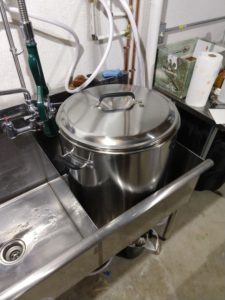 Barely fits in 2′ x 2′ Sink
Barely fits in 2′ x 2′ Sink
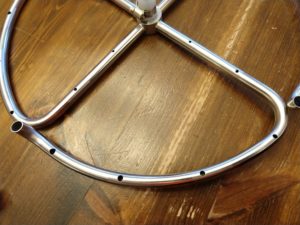 Close up look at the Ss Brewing Technologies InfuSsion Recirculation Manifold
Close up look at the Ss Brewing Technologies InfuSsion Recirculation Manifold
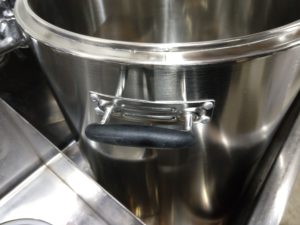 A look at the sturdy handles
A look at the sturdy handles
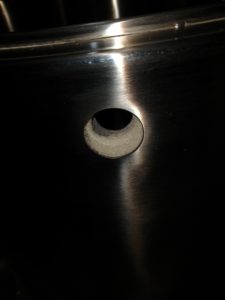 A look a the insulation layer as visible via the recirc port
A look a the insulation layer as visible via the recirc port
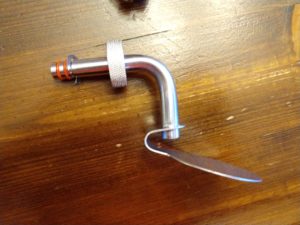 InfuSsion Mash Tun Vorlauf Attachment
InfuSsion Mash Tun Vorlauf Attachment
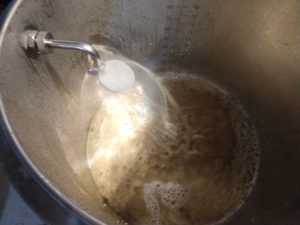 InfuSsion Mash Tun Vorlauf Attachment in Use
InfuSsion Mash Tun Vorlauf Attachment in Use
More Homebrew Finds!
- Last 50 Finds!
- Top Deals – a curated list of the best deals
- Homebrew Reviews – one of the largest libraries of homebrew reviews in existence!
- Our Top Posts – tips, how-tos, resources posts and more
Special Thanks to Ss Brewtech for for providing the unit used for evaluation in this review.
By Brad Probert. Check out Brad’s website – beersnobby.com
pinnedThis post may contain affiliate links. We may make a commission when you use our links. This will never cost you extra. Thank you for supporting Homebrew Finds!
greatdealsPrice, promotions and availability can change quickly. Check the product page for current price, description and availability. review:ssbrewtechmt tag:tpr rs:7
